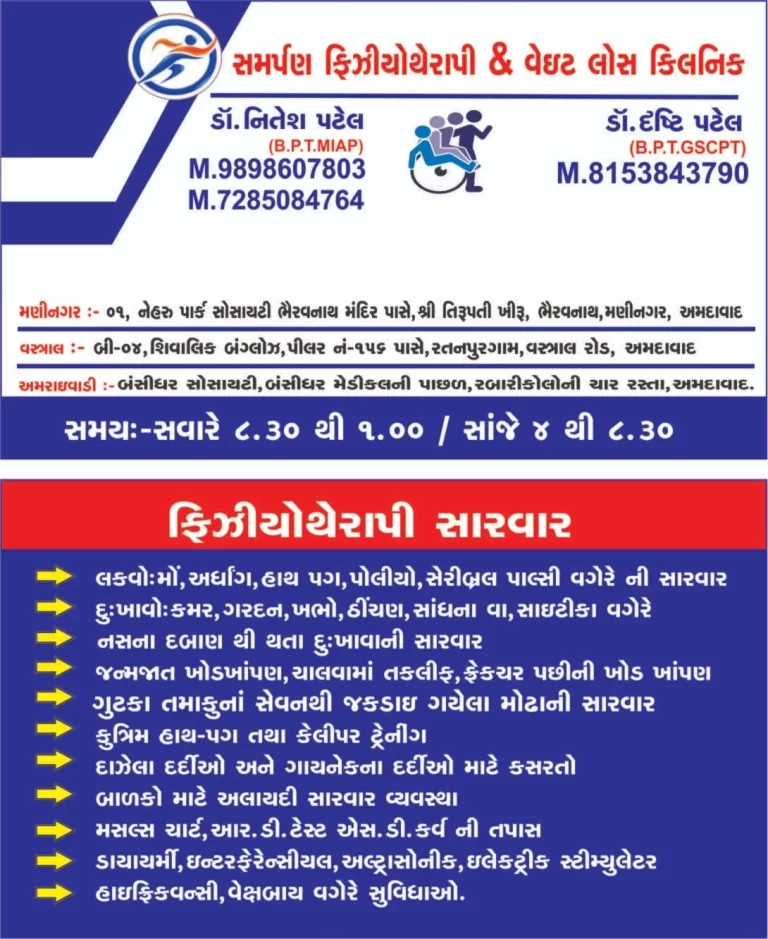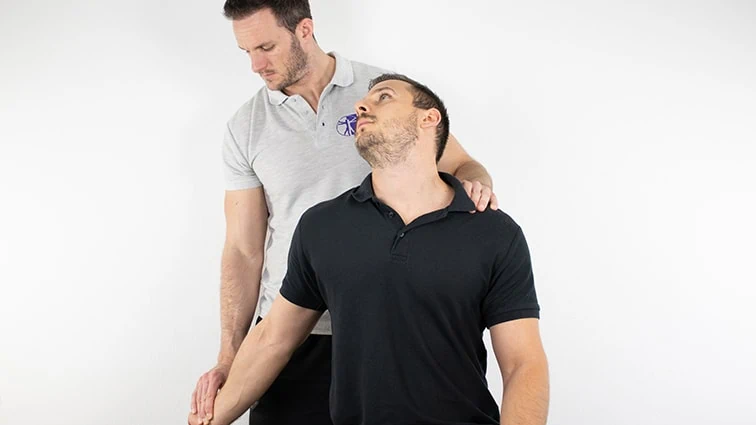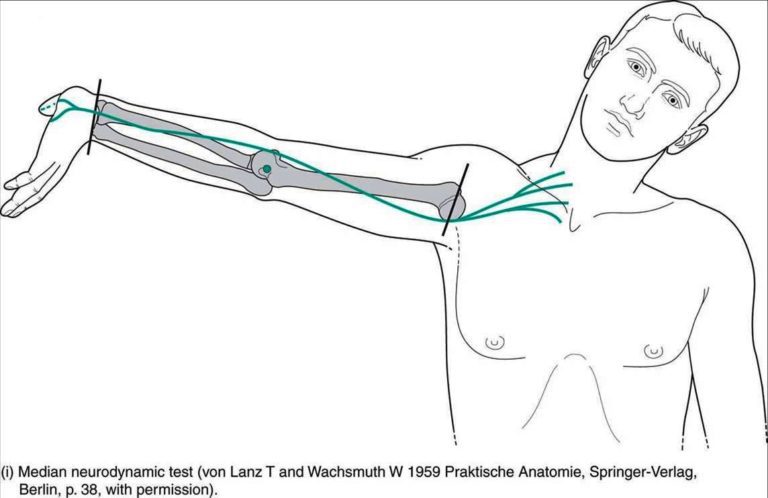Components of Physical Fitness:
Table of Contents
Description:
Physical activity is defined as any type of bodily movement that is produced by skeletal muscles and used for body energy. The energy spent can be measured in kilocalories. Physical activity in daily life can be categorized into occupational, sports, conditioning, household activity, or any other activities.
Definition of Physical fitness according to the Centers for Disease Control and Prevention (CDC), Physical fitness is “the capacity to carry out the daily activity with full energy and alertness, without fatigue, and with storage, energy responds to in emergencies”
Physical fitness starts in the morning when a person is wake up and ends their particular activity at the end of the day. It performs by the body systems’ capacity to work together and perform daily activities easily. Through this article, people know about the five health-related components of fitness, their importance, and how to include them in your routine workout. People are known that being physically active is essential for our good health. We add to our daily routine that lifting some weights and avoiding too much sitting.
The health-related components of physical fitness dividing into five categories and they can help you to design a better training program for good health. Exercise is a part of physical activity that is planned, structured, and repetitive and that improves or maintains our body or body structure. Physical fitness depends on health-related and skill-related components.
Physical fitness includes cardiovascular functioning, which gets increases the heart and lung function through aerobic activities. It builds up muscle strength, flexibility, and balance in the body: no need to get fancy, expensive equipment to do fitness activities. For example, Walking is the best activity, it is done by almost everyone.
Examples: One can do various house and garden routine work that can help build strength, and help to do joyfully daily life activities.
A fit person can respond to normal life situations such as raking leaves at home, they can also respond to an emergency. For example, a person running to save a friend who is in a panic situation and needs help.
Physical fitness components include cardiorespiratory endurance, body composition, muscle strength, muscle endurance, and flexibility. Physical fitness has been previously defined as “a net amount of attributes by an individual, which allows a person to do physical activity with energy, and in the absence of fatigue.”
Definition of Aerobic exercise:
The aerobic exercise gave cardiovascular training. The word aerobic means “with oxygen,” which means that the oxygen can make into the muscles to help them burn fuel and move.
“Aerobic” means “relating to, involving, or requiring oxygen”, and the complete oxygen demanded by the use of oxygen during exercise through the aerobic metabolism. Aerobic exercise is done by repetitive light-to-moderate exercises or activities for extended periods.
Heart rate or breathing will increase by the aerobic activities.
Aerobic Fitness:
Aerobic fitness is a person’s body’s capacity to transport and utilize oxygen according to ACE (American Council Of Exercise) Fitness.
Health-related components of physical fitness:
Good health depends on health-related components of physical fitness because it determines the capability of an individual to perform daily activities.
The main aims of health-related fitness testing are :
Educates people about their present health fitness status comparative to standard age and sex-matched normative values
Provide the data that help make clinical decisions while prescribed exercises to give all fitness components.
Collects baseline data and follow-up data to check the progression of participants through an exercise program.
Motivates participants.
Notice the cardiovascular risk problems.
There are mainly five components of health-related physical fitness:
- Body composition.
- Muscular endurance.
- Muscular strength.
- Cardiovascular endurance.
- Flexibility.
Muscular Strength:
It is the “power” that can help the person to lift heavy objects. Muscles can exert force. If muscular strength is too low that person’s body could be weak and unable to complete more tasks as per demand. The person does the activity with heavy weights to increase the muscular strength and do the movement in the 4 – 6 or 12 – 15 rep ranges. If the weight is heavy so that person should perform fewer reps.
It can be examined statically or dynamically. Static or isometric strength can be assessed by the use of different devices like dynamometers and tensiometers. The dynamic strength is assessed by the 1RM(repetition maximum), In the 1RM the more resistance that can be moved through the full range of motion with a controlled manner and good posture.
Muscular Endurance:
Endurance is the capacity of the muscles to perform contractions for some periods. another is just carrying something hold it for a few seconds, the muscles are used for that period. To increase muscle strength person will train with low weights and do with the 20 – 25 rep range. They regulate bone mass, glucose tolerance, musculotendinous integrity, and capacity to carry out ADLs.
Muscle function tests are specific to the testing of a group of muscles, the type of contraction, the speed of muscle movement, the type of equipment, and the joint range of motion.
muscular endurance is measured by the total number of repetitions at a given amount of resistance. Muscular endurance is the number of repetitions performed at a percentage of the 1 -RM (eg: 75%) which is in both pre-and post examing.
- Weight training: A person lifts lighter weights with a higher rep range like 20 or more reps until muscles become not fatigued.
- Isometric exercise: This involves holding the body in the same position for a more period of time. For example, holding a plank for as long as you can.
- Longer duration training: Using the muscles for long periods of time, like cycling, running, swimming, or stair climbing.
If a person improves their own general endurance, start with low-intensity bodyweight exercises. For example, pilates, yoga, stair climbing, and long-distance activities are good options.
If people improve their athletic performance, they do higher rep strength training and sport-specific training to increase their muscular endurance.
To improve muscle strength: Use heavy weights with few reps, taking the muscles to fatigue with each set.
To improve muscle endurance: Use light weights and more rep counts to increase endurance over time.
Cardiovascular Endurance:
Cardiovascular endurance is a person’s body’s capacity to keep up with exercises like running, jogging, swimming, cycling, and anything that forces your cardiovascular system (lungs, heart, blood vessels) to work for long periods of time. The heart and lungs both fuel the body with the oxygen needed by body muscles, ensuring that they have needed oxygen for the work that they are doing.
Cardiorespiratory fitness is related to the capacity to perform large muscle, dynamic exercise, and moderate to high-intensity exercise for long periods of time. The activity depends upon the functional state of the respiratory, cardiovascular, and skeletal muscle systems. Cardiorespiratory fitness is regulate maximal oxygen uptake (VO2max).
The Cooper Run test and step test are commonly used to assess a person’s cardiovascular endurance.
Step test:
Purpose: Step tests are necessary to measure aerobic fitness. It is a simple test that requires minimal equipment and space.
Equipment required: The equipment used in this test is different from the test being conducted. The solid stepper or platform, stopwatch, and oximeter are needed in this test. Equipment is differ in height between 15-50 cm or 6-20 inches.
Pre-test: Explain the test procedures to the person. check the other health risks and obtain informed consent. Prepare forms and noted basic information like age, height, body weight, gender, and test conditions. Check step height and check pulse by the oximeter. Height of stepper for male 20 Inches /50.8 cm and female: 16 Inches / 40 cm)
Procedure:
- Ask them to do the steps up, and step down and 30 steps are completed per minute for 5 minutes or until exhaustion. Exhaustion is defined as when the person cannot maintain the stepping rate for 15 in a continuous manner.
- After completion of the test, the client immediately sits on the chair and counted the total number of heartbeats after finishing the 1 to 1½ minutes then measured after 2 to 2½ minutes, and lastly measure after 3 to 3½ minutes after finishing.
- The client’s heartbeats are counted by a feeling pulse at their wrist or measured by an oximeter.
- Scoring: The results depend on the stepping time and heart rate after exercise. A score can be calculated, it is then compared to normative values to determine a fitness rating. The American College of Sports Medicine (ACSM) gives an equation for determining a person’s total gross VO2 from the stepping rate and stepper height.
Advantages:
- Low price for the equipment.
- Easy for transformation.
- Permanent calibration.
- Stepping is a natural activity.
- Some tests can also be self-administered.
Disadvantages:
- This activity is different biomechanically if the step height is more and the person is short in height so the person becomes fatigued earlier and the test result is not accurate.
- Body weight is also an affected factor in it.
- Testing large groups of people with this test takes more time.
- There is a danger falling of person.
- Sometimes it is difficult to take some physiological measurements during the stepping (e.g., heart rate, blood pressure).
Cooper Run Test:
The Cooper 12-minute walk or run test is the best test of aerobic fitness, in this test person cover as much distance in 12 minutes. There are many other variations of running or walking tests, including the Cooper 1.5 mile run test, and also a swimming activity.
Purpose: To check the aerobic fitness of a person’s body.
Required Equipment: flat round circle or running track, any marker equipment, recording papers, stopwatch.
Pre-test: Explain the test procedures to the person. Check the health risks. Ready papers and note basic information such as age, height, body weight, gender, and test conditions.
Procedure: Put markers, set intervals around the track, and final measure the completed distance. Participants run for 12 minutes and recorded the total distance covered. Walking is allowed, Encouraged participants may cover the maximum distance.
Scoring: There are Cooper test norm tables for interpreting the results for adults. There is an equation that can be used to check VO2max (in ml/kg/min) from the distance score.
VO2max = (35.971 x distance in miles) – 11.288
VO2max = (22.351 x distance in kilometers) – 11.288
Target population: This test can be modified to be suitable for most populations. For those who are unfit or unable to run, those persons are similarly walking tests performed.
Validity: Cooper gave a correlation of 0.90 between VO2max and how much distance is covered in a 12 min walk/run.
Reliability: the reliability of this test will depend on practice, pacing strategies, and motivation level.
Advantages: large groups can be tested at one time, and it is a no more costly and simple test to perform.
Disadvantages: This test can be affected by a person’s motivation.
Variations/modifications: The test can also check by running on a treadmill for 12 minutes. There are also more variations of the walk/run test. The alternative Cooper 1.5 mile (2.4km) run test was developed.
Flexibility:
Flexibility is the most important, component of physical fitness. It is important in athletic performance. If the flexibility is less, the muscles and joints may stiff and movements may be limited. Flexibility is defined as a person’s body can move in a whole range of motion without pain. If the person’s body is flexible that can help in yoga to do different poses. It is also defined as the capacity to move a joint in its whole range of motion.
Flexibility test:
To Check the body flexibility,
A person in a standing position, bend downward and try to touch your toes with your knee straight and see if the person does it easily or not.
A person in a long sitting position with their back straight, lean forward, try to touch the toes, and check does it easily or not. Those who have good flexibility will usually be able to touch their toes, while those who have limited flexibility will not be able to touch their toes. This test is also known as a sit and reach test.
It depends on many specific variables including distensibility of the joint capsule, warm-up, and muscle viscosity. Flexibility is checked from the particular joint, thus no single flexibility test can be used to define the total body flexibility. Goniometers, inclinometers, electrogoniometers, the Leighton flexometer, and measuring tape are some common devices to measure flexibility in particular degrees. Sit and reach test is one of the flexibility tests.
If the body is not flexible or stiffness is present do the exercise and stretching to flexible the particular joint and body.
Static stretching:
- Static stretches are those in which take a standing position or sitting position and hold a single position for a period of time, up to 30 seconds. so that stretches the particular muscle. Rep it 3 times with 30 secs hold
- When stretching in this way, a person’s brain and muscles are relaxed that support their joints.
- It is helpful for flexibility, but it may increase the risk of injury prior to the activities like weight training or high-intensity sports. Therefore, static stretching is usually best reserved for the cool-down phase of a workout.
Dynamic or active stretching:
- Dynamic stretching is known as a movement-based type of stretching. In this, the position is not held for some period of time.
- These are active movements that take muscles and joints through a full range of motion.
- It is done during a warm-up or can be done during a self-stretching in between work.
- Examples are shoulder rotations, leg swings, lunges, and trunk rotation.
Dynamic exercises:
- Through the exercises elongate and stretch the muscle during movements, such as when performing pilates, yoga, and tai chi exercise.
- The aim of dynamic movement is to be aware of the muscles that are needed for the upcoming exercise.
- It includes dynamic stretching in a warmup period to prepare your body for movements.
- Endurance exercises that benefit from dynamic movement such as biking, running, and swimming, and also sports activities such as basketball, soccer, and volleyball.
Body Composition:
Body fat composition means to the total percentage of fat situated in the human body. Body composition is the relative percentage of body mass and it is fat and fat-free tissue used by a two-compartment model. It can measure in laboratory and field techniques that differ in complexity, testing cost, and accuracy.
Other measurements are Body mass index, body or waist Circumferences, and Skinfold measurements.
Waist circumference:
A large waist circumference is known as more body fat in the stomach area and so it is responsible for higher risk of chronic disease.
The waist circumference ratio in women is >35 inches or 85 cm in women and in men >40 inches or 101.6 cm in men.
Waist-to-hip ratio:
The Waist-to-hip Ratio is given the proportion of fat stored in the body around the waist and hip. It is easy to measure fat distribution. The hips are the wider part of the buttocks.
The Waist Hip Ratio is calculated by dividing the waist measurement by the hip measurement.
The formula is waist-hip ratio= waist circumference/hip circumference.
The waist-hip ratio for women is <0.8, and for men is <0.95. The high ratio of it is associated with a high risk of chronic disease women should have a waist-to-hip ratio of 0.8 or less, whereas men should have a waist-to-hip ratio of 0.95 or less. A high ratio (>0.80 in women and >0.95 in men) is associated with a higher risk of chronic diseases such as heart disease and diabetes
Mainly the three types of body shape are present according to the extra fat in the body.
- An apple shape (carrying extra fat around the stomach) is riskier for the health.
- A pear shape (carrying extra fat around your hips or thighs).
- An avocado shape.
Dual-Energy X-ray Absorptiometry (DEXA):
It is Performed clinically and measures bone mineral density, muscle mass, and fat mass. It can give an exact idea of body composition. It is more costly.
Hydrostatic underwater weighing:
This method measures the weight on land and then underwater by use of an underwater scale. This method is used for research settings.
Air Displacement Plethysmography (ADP):
It is found in special clinics, it measures your total weight, fat mass, and muscle mass. It is easy to perform comparatively the hydrostatic underwater weighing.
Body mass index (BMI):
It gives a general idea of body composition. The BMI is defined as the body mass divided by the square of the body height, and it is expressed as kg/m2 unit, which means body mass shown in kilograms and height shown in meters.
BMI=MASS(Kg)/WEIGHT(m^2)
To qualify as a fit person:
- Men have a body fat composition of less than 17%.
- Women have a body fat composition of less than 24 %.
- The average man situated in about 18 to 24 percent body fat, while the average woman has 25 to 31% body fat.
Skill-related components of fitness:
It is known as performance-related fitness components. These components are connected with the athletic ability of an individual.
There are 6 components that are skills related to physical fitness:
- balance
- coordination
- power
- agility
- reaction time
- speed.
Balance:
Balance is the ability of an individual to maintain the line of gravity within the own base of support. Another Balance is the ability to control or stabilize the body when a person is standing still or moving. It is divided into static and dynamic balance. Balance is controlled by three different systems: somatosensory, visual, and vestibular systems.
It can be assessed by different outcome tools such as the berg balance scale(BBS).
Coordination:
It is useful for the senses, such as sight and hearing, and it is useful both together with body parts in performing motor tasks smoothly and accurately. For example, playing basketball. Using the hands and eyes together is called hand-eye coordination.
Co-ordination is checked by the different test following:
Rapidly Alternating Movement Evaluation: Ask the patient to place their hands on the thighs and rapidly turn their hands up and then palm down, do the repeated movement of palm up and down on the thigh. Tell the patient to repeat it rapidly for 10 seconds. Normally this is possible without any difficulty. If the patient has difficulty doing this movement the problem is coordination.
Point-to-Point Movement Evaluation: Ask the patient to extend the arm and touch their nose, and touch the examiner’s outstretched finger with the same finger. Ask the patient to go back and do again touching their own nose and then the examiner’s finger. Once the patient does it correctly a few times, ask the patient to continue that movement with closed eyes. Do that movement with closed eyes. Repeat and compare to the other hand.
Power:
It is the rate that is able to exert a maximal force on the muscles. Vertical jump tests and hop tests are examples of power testing for the lower limb. Ball throwing test can be used to assess upper extremity power.
Power is a combination of speed and muscular strength. For example, volleyball players lift up to the net and lift their bodies high into the air.
Agility:
Agility is the ability to change and control the direction and position of the body while one position is a constant, rapid movement. For example, changing directions to hit a tennis ball while playing table tennis.
Reaction time:
Reaction time is related to the time elapsed between stimulation and the beginning of the reaction to it. Reaction time is affected by different variables including attentive, cognitive, and motor functions.
Reaction time is the ability to given respond quickly to whatever signals a person can hear, see or feel.
Three basic reaction times are following:
- Simple reaction time has a single stimulus and a single response.
- Recognition reaction time has several false stimuli mixed with one correct stimulus and gives a response.
- Choice reaction time involves multiple stimuli and responses are different for each stimulus.
Speed:
It is the ability to do a movement in a short period of time. Speed combined with strength provides power and force. The sprint test is one example of a test that can be used to examine a person’s speed.
Many sports persons rely on speed to gain an advantage over opponents. For example, a Basketball player, Tennis player, or Football player.
FAQ:
What are the main components of physical fitness?
Mainly 5 components of physical fitness are Muscular strength, muscular endurance, cardiovascular endurance, Flexibility, and body composition.
What are the types of fitness components?
Fitness components depend mainly on 1) health-related and 2) skill related.
Health-related components are :
Body composition.
Muscular endurance.
Muscular strength.
Cardiovascular endurance.
Flexibility.
Skill-related components are:
balance
coordination
power
agility
reaction time
speed.What is the BMI?
BMI means Body Mass Index.
It gives a general idea of body composition. The BMI is defined as the body mass divided by the square of the body height, and it is expressed as kg/m2 unit, which means body mass shown in kilograms and height shown in meters.
The formula of BMI=MASS(Kg)/WEIGHT(m^2)What are the types of body shapes?
Mainly the three types of body shape are present according to the extra fat in the body.An apple shape (carrying extra fat around the stomach) is riskier for the health.
A pear shape (carrying extra fat around your hips or thighs).
An avocado shape.What is static and dynamic stretching?
Static stretching: Static stretches are those in which take a standing position or sitting position and hold a single position for a period of time, up to 30 seconds. so that stretches the particular muscle. Rep it 3 times with 30 secs hold.
Dynamic stretching: Dynamic stretching is known as a movement-based type of stretching. In this, the position is not held for some period of time.What is the waist-hip ratio?
The Waist-to-hip Ratio is given the proportion of fat stored in the body around the waist and hip. It is easy to measure fat distribution. The hips are the wider part of the buttocks.
The formula for waist-hip ratio is waist circumference/hip circumference.
The waist-hip ratio for women is <0.8, and for men is <0.95. The high ratio of it is associated with a high risk of chronic disease women should have a waist-to-hip ratio of 0.8 or less, whereas men should have a waist-to-hip ratio of 0.95 or less. A high ratio (>0.80 in women and >0.95 in men) is associated with a higher risk of chronic diseases such as heart disease and diabetes







